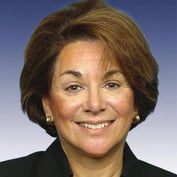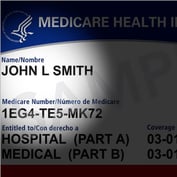What You Need to Know
- Medicare's 2022 net asset gain was about the same as the gross domestic product of Bulgaria.
- Trustees predict that Medicare will have 110 million enrollees in 2097 and that costs could amount to 8.3% of U.S. gross domestic product.
- Part D was the only Medicare program to report a net asset decrease in 2022.
The federal government’s Medicare health insurance program may have trouble generating enough operating gains to pay for the baby boomers’ future medical cost hump.
But, for now, Medicare is wildly profitable.
Medicare is a nonprofit government entity. The equivalent of operating profits, or operating gain, for a government entity is its net change in assets.
The Medicare Part A hospital bill insurance program and Medicare Part B physician and outpatient services insurance program reported $85 billion in net asset gains for 2022 on $865 billion in revenue, up from $39 billion in net asset gains on $773 billion in revenue for 2021, according to the new Medicare trustees program report for 2022.
Medicare’s 2022 net asset gain was about the same as the gross domestic product of Bulgaria, and its revenue was greater than the GDP of Switzerland.
What It Means
Looking at Medicare’s financial statements could help clients see how tricky understanding cash flow, projecting future cash flow and saving for future retirement health care costs can be.
For now, the Medicare hospital insurance program is raking in huge net asset gains. But unless something changes, it’s on track to start posting big annual asset losses starting around 2027.
Medicare: The Promise
Medicare is a federal program that covers health care costs for most U.S. residents ages 65 and older; people who are getting kidney dialysis treatments or who are getting kidney transplants; and many people who are collecting Social Security disability insurance benefits.
Medicare managers see the program as more than an ordinary health insurer.
Chiquita Brooks-LaSure, the administrator of the Centers for Medicare and Medicaid Services, said in the Trustees Report release announcement that Congress and the Biden-Harris administration need to work together to keep the program strong.
“Medicare is a key pillar of our health care system and a sacred promise that we’ll support the generations who came before us and those who come after,” Brooks-LaSure said.
One result of the effort to preserve the pillar: The report includes program projections for 2097, when, under current rules, the babies to be born in 2032 will start applying for Medicare benefits.
The boards of the Medicare Part A and Medicare Part B programs, which are chaired by U.S. Treasury Secretary Janet Yellen, predict that Medicare will have 110 million enrollees in 2097 and that Medicare costs could amount to 8.3% of U.S. gross domestic product.
Medicare Part A: Hospital Insurance
The Medicare Part A hospital insurance program uses a combination of payroll tax revenue, other revenue streams and interest earnings on a trust fund to pay inpatient hospital bills for Medicare enrollees.
The program reported $54 billion in net asset gains for 2022 on $397 billion in revenue, up from $8.5 billion in net asset gains on $337 billion in revenue for 2021.
The trustees now estimate that the trust fund will have cash in it until 2031. A year ago, the trustees were predicting that trust fund insolvency would arrive in 2028.
In 2031, if the trustees’ projections are correct and no other parameters change, the Medicare program will still have enough payroll tax revenue and other revenue to pay 89% of the projected scheduled benefits. The percentage of scheduled benefits that the program could pay would bottom out at 81%, in 2047.
The number of Part A enrollees increased 1.66% between 2021 and 2022, to 65 million.
Mainly because of the COVID-19 pandemic and pandemic-related effects on the health care system, the economy and society, the rate of Part A enrollment growth slowed from 1.72% in 2021, from 2.23% in 2020, and from 2.52% in 2019.
Average total spending per Part A enrollee increased 3.5% in 2022, to $5,814.









 March 31, 2023 at 04:00 PM
March 31, 2023 at 04:00 PM










